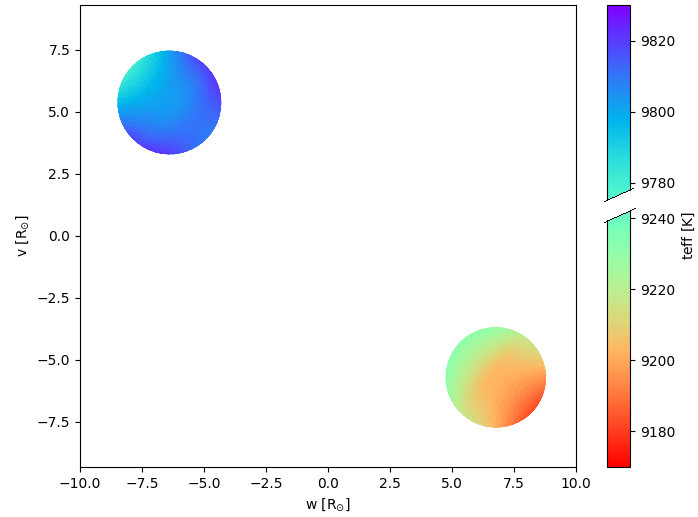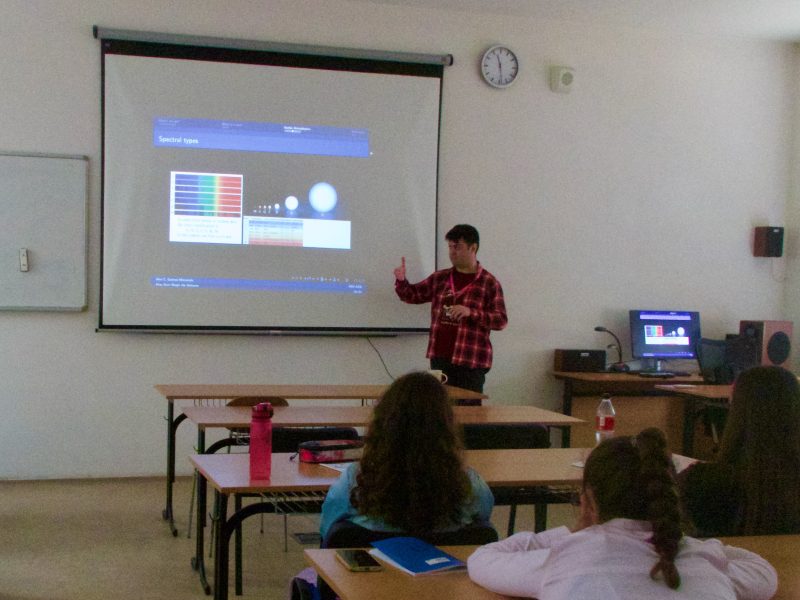Not all stars behave exactly according to the column they fall into. For example, some of the stars show anomalies in their chemical composition; these are known as chemically peculiar. Marek Skarka of ASU’s Stellar Department led a team that studied a pair of chemically peculiar stars in the 50 Draconis system. The work shows that this is a very interesting system with several unusual physical processes.
Abstract
The interplay between radiative diffusion, rotation, convection, and magnetism in metallic-line chemically peculiar stars is still not fully understood. Recently, evidence has emerged that these effects can work together. Our goal is to study the bright binary system 50 Dra, describe its orbit and components, and study additional variability. We conducted our analysis using TESS short-cadence data and new high-resolution spectroscopic observations. We disentangled the spectra using Korel and performed spectral synthesis with Atlas9 and Synthe codes. The system was modelled using Korel and Phoebe2.4. We also employed SED fitting in Ariadne and isochrone fitting using Param1.5 codes. Our findings indicate that the non-eclipsing system (with an inclination of 49.9(8) deg) 50 Dra, displaying ellipsoidal brightness variations, consists of two nearly equal A-type stars with masses of M1=2.08(8) and M2=1.97(8) M⊙ and temperatures of 9800(100) and 9200(200) K, respectively. Our analysis also suggests that the system, with an orbital period of Porb=4.117719(2) days, is tidally relaxed with a circular orbit and synchronous rotation of the components. Furthermore, we discovered that both stars are metallic-line Am chemically peculiar stars with an underabundance of Sc and an overabundance of iron-peak and rare-earth elements. We identified additional variations with slightly higher frequency than the rotational frequency of the components that we interpret as prograde g-mode pulsations. The system 50 Dra exhibits numerous exciting phenomena that co-exist together and may have an impact on our understanding of chemical peculiarity and pulsations.
Image description: A model of the 50 Draconis system. The tidal deformation of the disks is almost negligible at this scale, but the distribution of surface temperatures on both components is clearly visible. (Credit: Marek Skarka)
More information
- ASU popular article: Na čem pracujeme: 50 Draconis: zajímavá pulsující chemicky pekuliární dvojhvězda (M. Švanda, ASU, in Czech)
- M. Skarka, J. Lipták a kol., 50 Dra: Am-type twins with additional variability in a non-eclipsing system, Astronomy & Astrophysics in press, preprint arXiv:2504.05854
- Contact: Mgr. Marek Skarka, Ph.D., marek.skarka@asu.cas.cz



